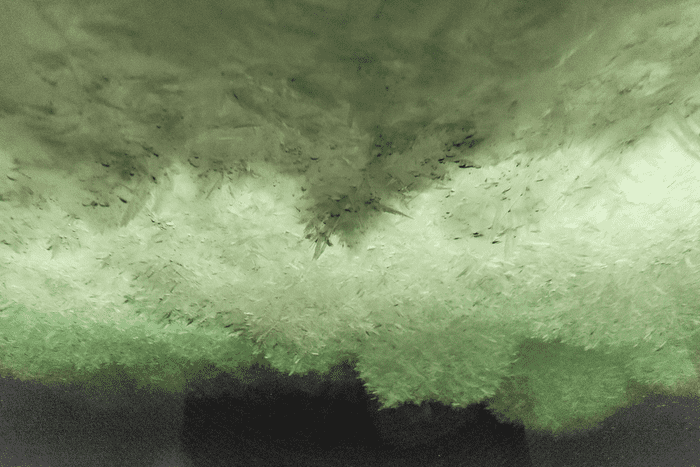New Methods For Predicting Alien Life: Focusing On Non-Xenomorph Species On Earth

Table of Contents
Analyzing Extremophiles as Analogs for Extraterrestrial Life
Defining Extremophiles and their Significance
Extremophiles are organisms that thrive in extreme environments—conditions previously considered uninhabitable for life as we know it. These environments push the boundaries of our understanding of life's adaptability. Examples include:
- Thermophiles: Flourishing in extremely hot environments, such as hydrothermal vents (e.g., Thermus aquaticus).
- Halophiles: Thriving in highly saline conditions, like the Great Salt Lake (e.g., Halobacterium salinarum).
- Acidophiles: Existing in highly acidic environments, such as acid mine drainage (e.g., Acidithiobacillus ferrooxidans).
- Psychrophiles: Thriving in extremely cold environments, such as polar ice caps (e.g., Psychrobacter species).
The remarkable survival strategies of extremophiles provide compelling models for predicting how life might adapt to the diverse and often hostile conditions found on other planets. Their existence expands the possibilities for where life might exist in the universe.
Studying Extremophile Metabolism and DNA
Understanding extremophile metabolism is crucial for predicting how alien life might cope with harsh conditions. Researchers analyze their metabolic pathways to identify adaptations that enable survival in extreme environments. This includes studying:
- Unique enzyme structures that function at extreme temperatures, pressures, or pH levels.
- Alternative energy sources utilized by extremophiles in the absence of sunlight or oxygen.
- Mechanisms for coping with high radiation levels or desiccation.
Furthermore, studying extremophile DNA and RNA provides insights into the potential for diverse genetic codes in extraterrestrial life. Techniques such as genomics, transcriptomics, and proteomics allow scientists to analyze the genetic makeup and protein expression of extremophiles, revealing the incredible diversity of life’s building blocks. This helps us understand the potential for life forms with genetic codes significantly different from those on Earth.
Extremophile Biosignatures and Their Detection
The search for extraterrestrial life often focuses on biosignatures – chemical indicators of life. By studying biosignatures produced by extremophiles in Earth’s extreme environments, we can refine our search for life beyond Earth. Potential biosignatures include:
- Specific gases: Methane, oxygen, nitrous oxide – their presence in specific ratios in a planet's atmosphere could indicate biological activity.
- Isotopes: Unusual ratios of certain isotopes (different forms of the same element) can point to biological processes.
- Organic molecules: Complex organic molecules, like certain amino acids or lipids, could signal the presence of life.
Identifying these biosignatures in extraterrestrial environments would be strong evidence supporting the existence of alien life, even if it's drastically different from life on Earth.
Biosignature Detection in Planetary Atmospheres and Surfaces
Spectroscopic Analysis of Exoplanet Atmospheres
Powerful telescopes, equipped with advanced spectrometers, analyze the light passing through exoplanet atmospheres. This allows scientists to identify the presence of various gases, including potential biosignatures. However, this approach presents significant challenges:
- The faintness of the light from distant exoplanets makes detection extremely difficult.
- Distinguishing between biosignatures and abiotic sources of gases is a major hurdle.
- Technological advancements are crucial to improve the sensitivity and accuracy of these observations.
Rover and Lander Missions to Search for Surface Biosignatures
Robotic missions, such as those to Mars, play a crucial role in the search for past or present life. Rovers and landers utilize sophisticated instruments to:
- Analyze soil and rock samples for organic molecules, isotopes, and other biosignatures.
- Drill deep into the subsurface to search for evidence of past life preserved beneath the surface.
- Collect samples for eventual return to Earth for more detailed analysis.
Future missions will employ even more advanced technologies and strategies to enhance the chances of detecting biosignatures on other planets and moons.
The Development of Advanced Detection Instruments
The development of more sensitive and miniaturized instruments is vital for future space exploration. Scientists are actively developing technologies including:
- Microfluidic devices for analyzing tiny samples with high precision.
- Advanced mass spectrometers capable of detecting trace amounts of biosignatures.
- Hyperspectral imagers providing detailed spectral information about the surface composition of planets and moons.
These advancements will dramatically improve our ability to detect even subtle biosignatures, revolutionizing the search for extraterrestrial life.
Modeling the Evolution and Distribution of Alien Life
Computational Modeling of Planetary Habitability
Computer models simulate planetary conditions to predict the potential for life. These models consider factors such as:
- Climate: Temperature, atmospheric pressure, and water availability.
- Geology: Composition and structure of the planet's surface and interior.
- Atmospheric composition: Presence of gases that could support life.
While these models provide valuable insights, their accuracy depends on the input data and our understanding of planetary processes.
Phylogenetic Analysis to Understand Evolutionary Paths
Phylogenetic analysis uses genetic data to reconstruct evolutionary relationships. While extrapolating from Earth-based life to alien life involves significant uncertainties, it can still provide valuable insights:
- Identifying possible evolutionary pathways that could lead to diverse life forms.
- Predicting the potential for convergent evolution – where similar traits evolve independently in different environments.
- Understanding the factors that might constrain or promote the evolution of complex life.
Statistical Approaches to Predict the Prevalence of Life
Statistical methods, like the Drake Equation (while acknowledged as having significant limitations due to unknown parameters), attempt to estimate the probability of extraterrestrial life. More advanced models consider:
- The frequency of star formation.
- The fraction of stars with planetary systems.
- The fraction of planets suitable for life.
- The probability of life arising on a suitable planet.
These approaches, while inherently uncertain, provide a framework for evaluating the likelihood of finding extraterrestrial life and guide research priorities.
Conclusion: Revolutionizing the Search for Alien Life
This article has explored the exciting advancements transforming the search for extraterrestrial life. We've moved beyond simplistic assumptions, embracing the insights offered by extremophiles and developing sophisticated techniques for detecting subtle biosignatures. The focus on predicting alien life, particularly non-xenomorph life forms, reflects a more scientifically rigorous and inclusive approach. By understanding extremophiles and using advanced detection methods and predictive modeling, we are gaining a more accurate picture of what alien life might look like and where we might find it. Let's continue pushing the boundaries of our understanding in the quest for new methods to predict alien life, focusing on the diverse possibilities beyond the fictional xenomorph.

Featured Posts
-
 Saint Ouen Le Demenagement De L Ecole Une Decision Assumee Par Le Maire
May 27, 2025
Saint Ouen Le Demenagement De L Ecole Une Decision Assumee Par Le Maire
May 27, 2025 -
 Inquiry Into Kim Jong Uns Warship Incident Leads To Arrests In North Korea
May 27, 2025
Inquiry Into Kim Jong Uns Warship Incident Leads To Arrests In North Korea
May 27, 2025 -
 Sibling Rivalry Dylan Efrons Perspective On His Relationship With Zac
May 27, 2025
Sibling Rivalry Dylan Efrons Perspective On His Relationship With Zac
May 27, 2025 -
 Poslanets Trampa Ta Predstavnik Putina Zustrich U Peterburzi
May 27, 2025
Poslanets Trampa Ta Predstavnik Putina Zustrich U Peterburzi
May 27, 2025 -
 How Janet Jackson Supports Jennifer Lopezs Success
May 27, 2025
How Janet Jackson Supports Jennifer Lopezs Success
May 27, 2025
